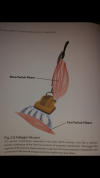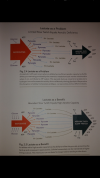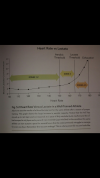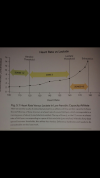You are using an out of date browser. It may not display this or other websites correctly.
You should upgrade or use an alternative browser.
You should upgrade or use an alternative browser.
Other/Mixed Heart Rate for Aerobic Training
- Thread starter Steve Freides
- Start date
Other strength modalities (e.g., Clubs), mixed strength modalities (e.g., combined kettlebell and barbell), other goals (flexibility)
- Status
- Closed Thread. (Continue Discussion of This Topic by Starting a New Thread.)
Harald Motz
Level 8 Valued Member
Harald Motz
Level 8 Valued Member
As @offwidth said AeT is highly trainable with (zone 2) basework. According to Al and TFTUA the more the better. Then it comes down to goals, time availability.
For knowing-feeling if you are nearing the anaerobic threshold is breathing: when the rate of breathing increases (significantly) is a good pointer - can be accompanied by feeling congestion/burning in the working muscles. Also the time being able to stay in that state is limited - especially when having a lower aerobic base 'small vacuum cleaner' as pictured above.
For knowing-feeling if you are nearing the anaerobic threshold is breathing: when the rate of breathing increases (significantly) is a good pointer - can be accompanied by feeling congestion/burning in the working muscles. Also the time being able to stay in that state is limited - especially when having a lower aerobic base 'small vacuum cleaner' as pictured above.
mikerobinson
Level 5 Valued Member
@Harald Motz Thank you for contributing to this thread!
In additional to having a similar sounding name, you and I seem to have similar desires. Curiously, I found Uphill Athlete useful. What makes you think their book is more suited for competitors and not experiencers? If you'd rather (and to not detract from Steve's thread), feel free to PM me.Honestly, my judgements on the Uphill Athlete guys was based purely on their Mountain Running stuff, which is my interest. There is a huge difference between people who can compete in Ultra distance mountain runs, and people who only want to experience them. I fall in the later.
I tend to blend my training, because what I want is a blended result. I like being a guy who can run a long way, and still be what I consider "strong", at least for me.
Hey, distract away.
-S-
-S-
offwidth
Level 10 Valued Member
Exactly… There are some pretty serious and high level experiencers out there….experiencers
offwidth
Level 10 Valued Member
No worries mate. I think I know where you are coming from…I am on my phone right now (I only have access to a computer through the week) and I am barely literate to begin with, but next week I will try to explain my "problems " with TFTUA for mere mortals.
I really wish I could retract the statement. It is a great book.
Coyote
Level 6 Valued Member
Well, I don't know that I can make my opinion any clearer then before, but here goes nothing.....
I DO find the book useful, I just think the technical aspect of it is wasted on most people. In my opinion, by far the majority of people are just not training enough.
I think the average ultra runner/mountain runner could follow a basic recipe:
Run a lot, slowly. Add a very, very small amount of intensity. Do some strength work.
There is also the following small areas were I do not 100% agree with the Uphill Athlete guys;
I have seen them state numerous times that our work can only be judged as a strain on us. An office worker has no less training benefit then a logger. I understand that physical labor does not make you a faster runner, but I do believe physical activity does affect your fitness. As I have said, most of us want to finish ultra event, not necessarily compete in one.
They recommend strength training they recommend I feel is inadequate for overall health, and not as efficient as other methods. Low weights, at a 10 count for numerous sets (five +) depending on fitness. I suppose that is aimed at strength endurance, but from what I have read elsewhere there are more efficient ways to train for that.
They gauge training volume by distance, without much mention of time or vertical. I am a flatlander and my aerobic speed is around 11:00 -12:00 per mile. In order to get 50+ miles per week, I would be looking at 10+ hours on aerobic running alone. That is a bunch for someone who works 40+ hours a week and has a family.
Guys, I am 55yo carpenter that enjoys going to ultras. I finish middle , to back of pack. I have zero actual training or education for any type physiology. I am just a guy who likes things put simply, and I honestly do not think all of this stuff is that hard. Most of us are leaving more improvement on the table from a lot more obvious things then our precise aerobic rate, or a fancy interval workout. Get your but up, and do something.
I did not mean to, nor do I have any business, questioning anything put out by professionals.
I DO find the book useful, I just think the technical aspect of it is wasted on most people. In my opinion, by far the majority of people are just not training enough.
I think the average ultra runner/mountain runner could follow a basic recipe:
Run a lot, slowly. Add a very, very small amount of intensity. Do some strength work.
There is also the following small areas were I do not 100% agree with the Uphill Athlete guys;
I have seen them state numerous times that our work can only be judged as a strain on us. An office worker has no less training benefit then a logger. I understand that physical labor does not make you a faster runner, but I do believe physical activity does affect your fitness. As I have said, most of us want to finish ultra event, not necessarily compete in one.
They recommend strength training they recommend I feel is inadequate for overall health, and not as efficient as other methods. Low weights, at a 10 count for numerous sets (five +) depending on fitness. I suppose that is aimed at strength endurance, but from what I have read elsewhere there are more efficient ways to train for that.
They gauge training volume by distance, without much mention of time or vertical. I am a flatlander and my aerobic speed is around 11:00 -12:00 per mile. In order to get 50+ miles per week, I would be looking at 10+ hours on aerobic running alone. That is a bunch for someone who works 40+ hours a week and has a family.
Guys, I am 55yo carpenter that enjoys going to ultras. I finish middle , to back of pack. I have zero actual training or education for any type physiology. I am just a guy who likes things put simply, and I honestly do not think all of this stuff is that hard. Most of us are leaving more improvement on the table from a lot more obvious things then our precise aerobic rate, or a fancy interval workout. Get your but up, and do something.
I did not mean to, nor do I have any business, questioning anything put out by professionals.
mikerobinson
Level 5 Valued Member
This is why I liked and bought one of their paid for programs. This program is time based, are (at least some) gym based, and does have the vertical (in the sense of the incline on the treadmill) rather than having to find a hill, and probably more practical for many of us in an urban environment. But, the proof will be in the pudding...I start Day One of 12 weeks tomorrow.They gauge training volume by distance, without much mention of time or vertical.
ali
Level 7 Valued Member
Run a lot, slowly. Add a very, very small amount of intensity. Do some strength work.
That's a very small book though ?
I get what you say and agree entirely.
Thing is, those that seek out the details allow you to reach your conclusion.
I'm not an endurance athlete but sprinter and my take is the reverse:
Run at maximum intensity, but not often. Do some easy aerobic. Do some strength work.
For health and general fitness, my bias, is that is a better model for general fitness than the dominant endurance model.
For competition or focused improvement, then the details creep in, whatever way you may lean.
To perhaps bring a little perspective to this, those of us here, just because we exercise at all, are already a small minority of the population. That we exercise with thought, without beating ourselves to a pulp, and with an eye on improving health, safety, and performance makes us a small minority of the small minority.Well, what is healthier is an argument between much smarter , and better educated people then myself. I know what I enjoy, and have a small proclivity for, so that is what I do.
Do what you like, and like what you do. I think that's a fine approach. For me, what I like is setting goals and making progress towards them, so it's about both the destination and journey for me, but I understand that the primary focus for some will be more one or the other.
-S-
mikerobinson
Level 5 Valued Member
Run a lot, slowly. Add a very, very small amount of intensity. Do some strength work.
"Run at maximum intensity, but not often. Do some easy aerobic. Do some strength work."
Two approaches. And great ways to put it too: Simple, meaningful, actionable and produces results and health, without overthinking or over programming. Saving these quotes.
Only problem for some of us is that we head into the gym with the good intention of an easy recovery or easy cardio day, and then end up trying to set another 5K best time, even though we ran at maximum intensity just a few days before...it's an irresistible disease...
offwidth
Level 10 Valued Member
Tell me about it…Only problem for some of us is that we head into the gym with the good intention of an easy recovery or easy cardio day, and then end up trying to set another 5K best time, even though we ran at maximum intensity just a few days before...it's an irresistible disease...
I really have to do my recovery rides solo and not with my club. Even then, if some jamoke has the audacity to pass me (especially on a hill)… it’s game on….
Town line sprints.
-S-
-S-
offwidth
Level 10 Valued Member
Oh yeah…. Them tooTown line sprints.
-S-
I did not mean to, nor do I have any business, questioning anything put out by professionals.
Thanks for taking the time to respond Coyote. I highlighted these two parts - the first because I think you're wrong (you can and should question things put out by professionals, especially if it is based off of not jiving with your experience) and the second becuase of how much it resonates with me, and probably why I really enjoy training based on ventilatory thresholds - it is simple, and I can just go, and I know when I need to slow down.Guys, I am 55yo carpenter that enjoys going to ultras. I finish middle , to back of pack. I have zero actual training or education for any type physiology. I am just a guy who likes things put simply, and I honestly do not think all of this stuff is that hard. Most of us are leaving more improvement on the table from a lot more obvious things then our precise aerobic rate, or a fancy interval workout. Get your but up, and do something.
- Status
- Closed Thread. (Continue Discussion of This Topic by Starting a New Thread.)




